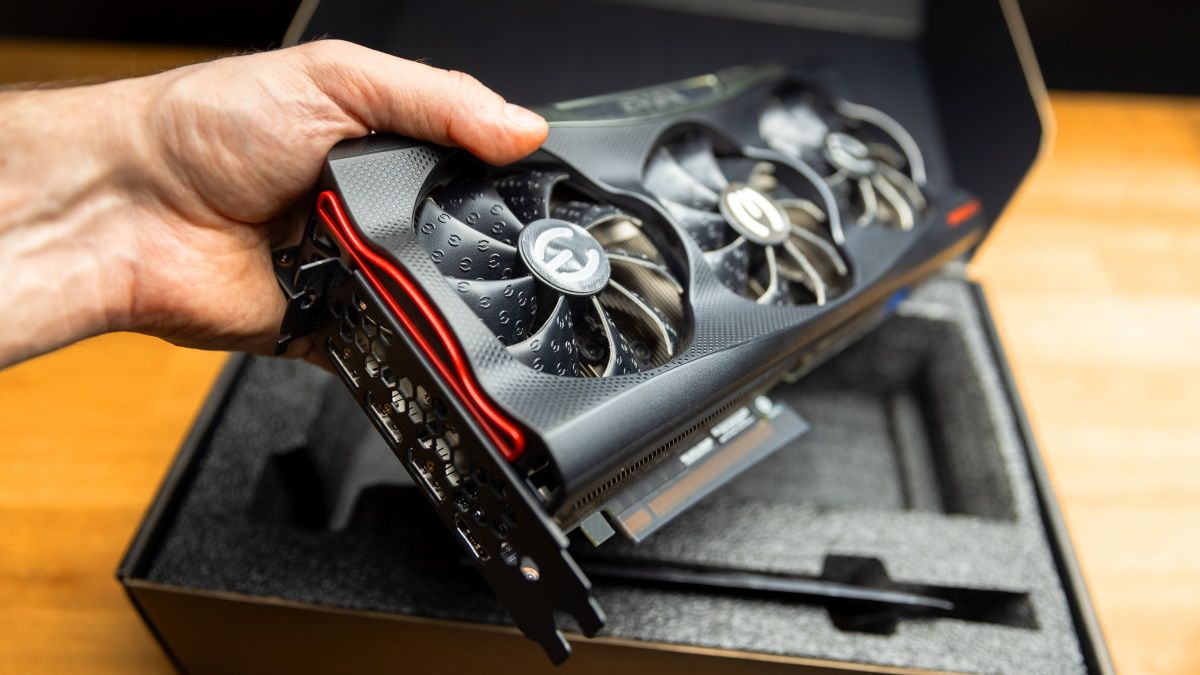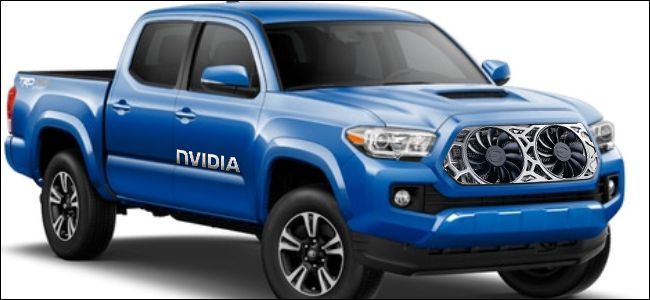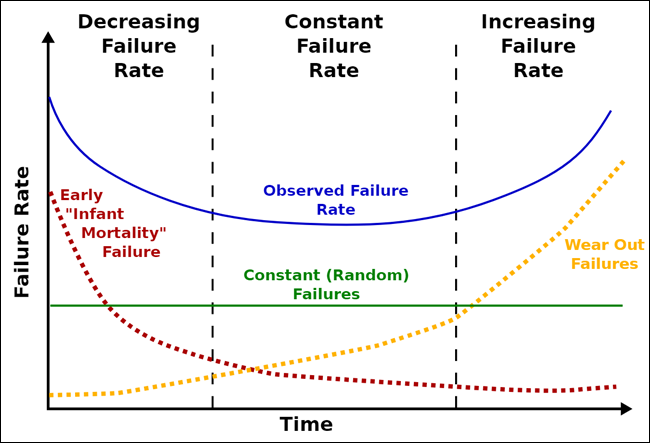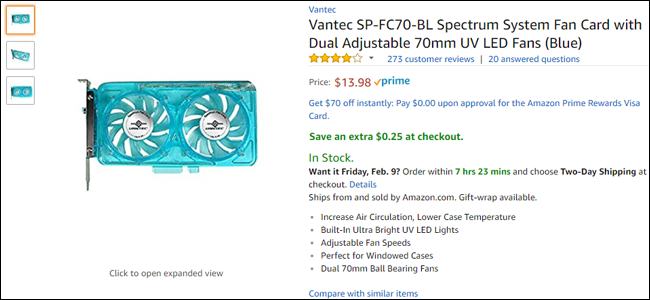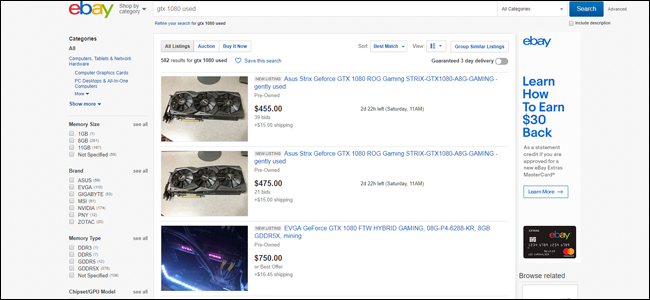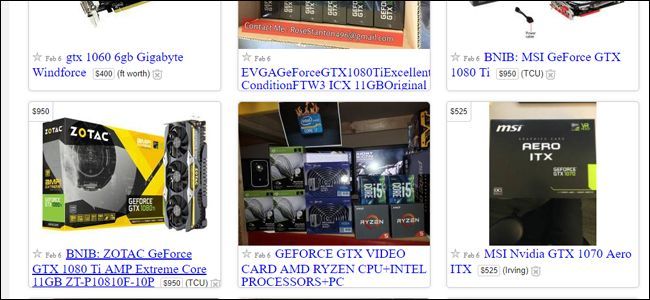Read update
- We originally published this piece in 2018. It's especially relevant once again in 2022, particularly after the Ethereum merge and the crash in the price of Bitcoin.
Quick Links
Cryptocurrency prices can be volatile, and changes in cryptocurrency mining processes and efficiency often lead to shakeups in the GPU hardware market. So when used GPUs heavily used by miners flood the used market, are they safe to buy for home use?
Broadly speaking, the answer is "yes." While buying secondhand graphics cards from Bitcoin miners carries a few inherent risks, they're not really greater than the risks of buying used parts in the first place. Let's break it down.
UPDATE: 12/14/22
We originally published this piece in 2018. It's especially relevant once again in 2022, particularly after the Ethereum merge and the crash in the price of Bitcoin.
A GPU Is Not a Car
It's tempting to think of electronic components as having a shelf life, and that after a certain amount of use it's dangerous to keep them without replacement. But that's not really true---old electronics can work for decades without issue, as long as they don't have moving parts and aren't exposed to extreme conditions outside of their operating standards. For example, I used to drive trains with computerized logging systems that had been in continual operation for fifty years.
Now, it's true that PC components wear out eventually. Hard drives are the obvious example here---if you're not planning for your drive to fail, then eventually you're going to be caught by surprise. But graphics cards are a little different. While they do fail on occasion, they're more prone to failure soon after installation due to a weakness of the incredibly complex chip fabrication process than being "worn out" by regular use. This is the lemon phenomenon in action: a GPU or CPU that works fine past its warranty period is probably going to keep going for several years, at least. The engineering term "bathtub curve" is applicable here.
As a result, you could view graphics cards that have been in mining rigs for some time as already past the breaking-in point of their electronic life. So long as it hasn't been unreasonably overclocked, overheated, or physically damaged, it's probably alright in terms of reliability.
Speaking of which...
Miners Aren't as Hard on Their Hardware as You Think
It's true that the point of a cryptocurrency mining rig is to constantly number-crunch, day-in and day-out, in the elusive search for sweet, sweet hash. If that sentence doesn't make any sense to you, let me save you a lot of reading and just say this: Bitcoin miners turn electricity into digital money with math, and they do that math with graphics cards.
But that simplified explanation is enough to make an important point. Mining for cryptocurrency is about processing power, certainly---that's why the distributed chip designs of GPUs are better for most methods of mining than CPUs. But it's also about efficiency: if a miner uses so much electricity that it's eating up electric bills faster than it's solving hashes and generating coins, then it's actually losing money for the owner. Mining has now become a balancing act, between choosing the most profitable version of cryptocurrency, having the most computational power available, and using that power to its maximum benefit without draining more electricity than a Wal-Mart freezer aisle.
To that effect, Bitcoin miners are actually more likely to undervolt their GPUs than overclock them, if they even bother to do any modifications to their software setup at all. There's less benefit for a six-GPU mining rig being overclocked than a single GPU in a gaming PC. Bitcoin miners are much more concerned with efficiency than screaming polygon-pushing power, so the idea of them running a card until it melts really doesn't hold up.
Plus, GPUs are engineered to run hot. An average GPU will reach temperatures between 50c and 70c while it's under heavy load, and it can keep this up for hours or days without issue.
With all that in mind, we wouldn't worry too much. In fact, it's entirely possible that a card bought new and used for a couple of years by a heavy gamer is going to be less reliable than one used for mining, if the user overclocked it hard and treated it less-than-nicely.
You Might Have to Replace Some Fans
There is one moving part on a modern graphics card: the cooling fan. And since the fans on mining rigs are on at a constant rate more or less all of the time, it's possible that the electrical motors or bearings in those fans might be considerable weaker and more prone to failure in a card used for mining than in a more typical secondhand card.
But this, too, isn't all that big of a deal. Most of the major card series have aftermarket fans and liquid cooling options available to them, especially the mainstream mid-range and high-end cards popular among cryptocurrency miners. If the fans on your used card give out, it's an easy thing to replace---if you've ever installed a CPU cooler, you should be able to handle it without any problems. You could even take the opportunity to upgrade to a liquid cooling system, or pick up a broken version of the same card and harvest its factory cooler.
In fact, graphics cards that come from dusty environments---or just from former owners who didn't properly clean their PC cases often enough---are probably just as prone to fan failure as former mining cards.
Buying Used Always Has Risks, So You Should Still Be Careful
So we've established that used graphics cards from mining rigs aren't especially bad picks, at least in terms of used hardware. But they're still, you know...used hardware. Buying used it a great way to save money (and something you should probably do more often!), but it does have its own set of risks, too.
When you buy used, you generally want to have something guaranteeing your purchase. eBay/PayPal and its built-in buyer protection is a good example, and Amazon is generally a good place to pick up used goods, since vendors don't want to risk jeopardizing accounts with repeated reports from unhappy buyers.
User-to-user markets tend to be cheaper than both these options, but they're also riskier: if you spend $250 on a bum graphics card on Craigslist or Facebook, there's little option for recompense. Caveat emptor, as always. It might also be worth looking for newer cards: in addition to better power and efficiency at all price levels, some manufacturers like EVGA, Gigabyte, and MSI allow warranties to transfer between owners. They'll replace dud cards based on serial numbers so long as the purchase date is within the warranty period.
That being said, if cryptocurrency markets continue to bust as they have in the early part of this year, there are going to be some really fantastic deals to be had for anyone looking for a new GPU. It's possible that the secondary market could get so flooded that even new cards go under their recommended retail prices for the first time in a long time. After a bleak few months of hardware shortages, it'll be a welcome change for PC gamers everywhere.
Image credit: Newegg, Toyota, Wikimedia, ezphoto/Shutterstock

